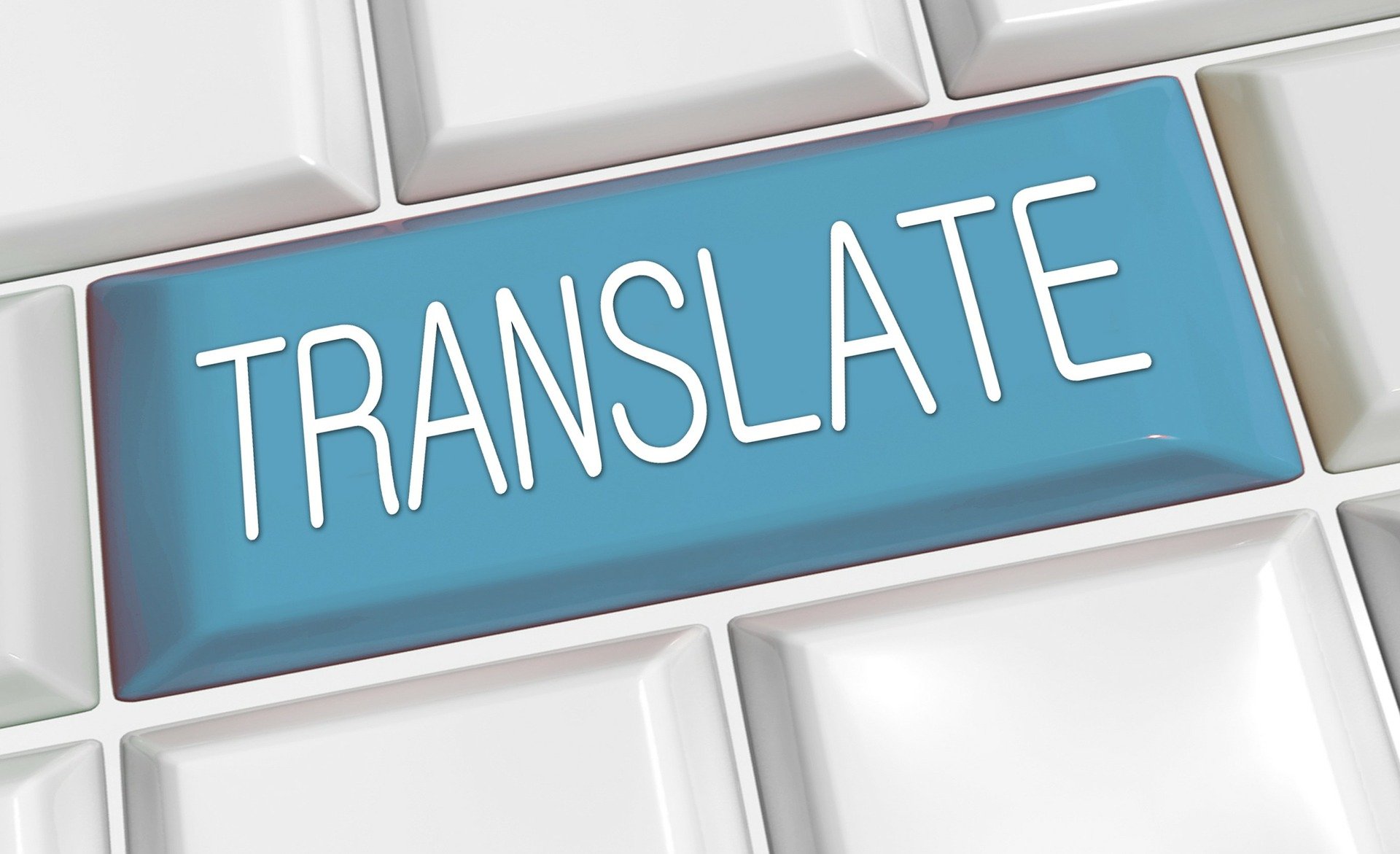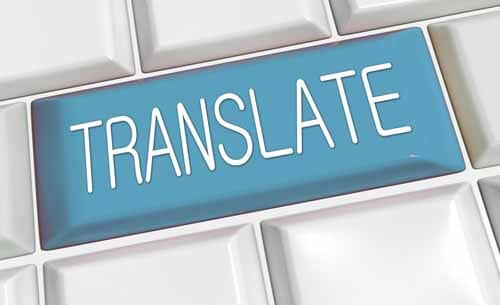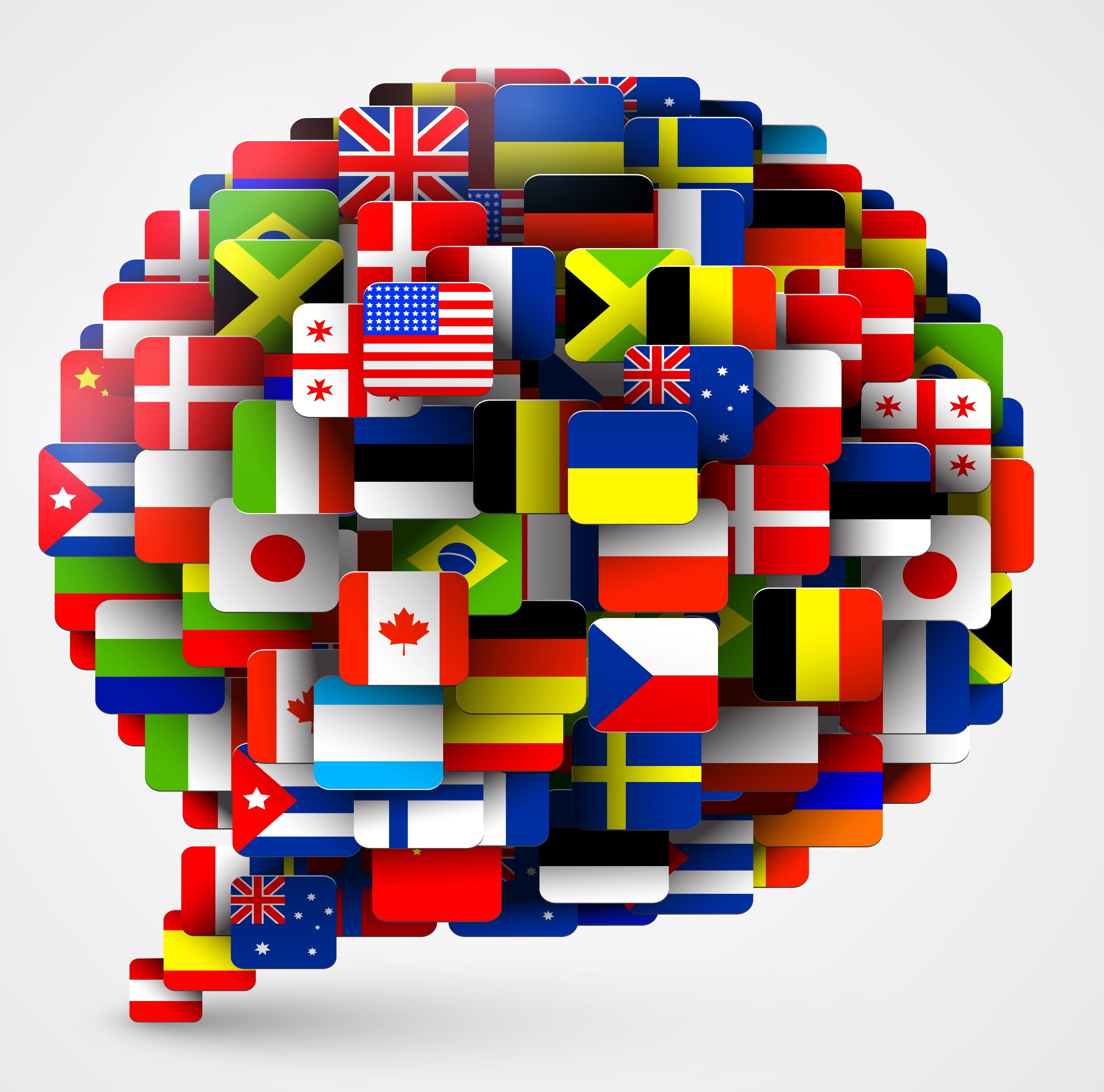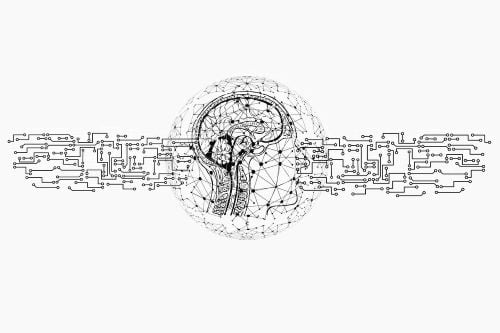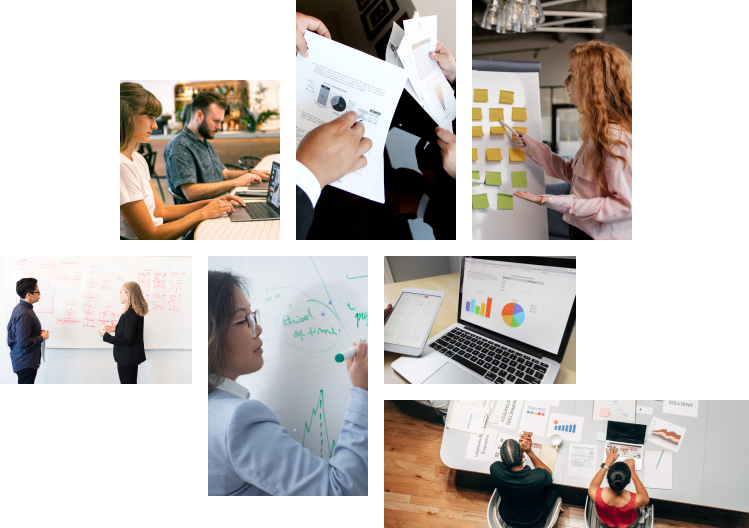Listen to Audio Version:
The talk about AI technologies has reached a crescendo. With the release of ChatGPT less than a year ago, the discussion surrounding AI took off and now we can’t open an Internet browser, pick up our phones, or turn on the TV without hearing something new, exciting, or disturbing about AI.
Critics are quick to predict that AI will eliminate jobs and possibly even take over the world (any Terminator fans here?), while proponents are touting all the advances as tools – or improvements to existing tools – that will revolutionize the way companies do business, while maximizing employee efficiency.
Many industries, like the language services industry, have been using AI tools for a long time. Machine Translation (MT) debuted in the 90s and has been evolving ever since. In fact, at least half of language service agencies today use MT and other AI tools to increase efficiency and mitigate the costs associated with a strictly human-driven model. Yet even 30 years later MT – and even AI-driven MT – still can’t provide the proven quality of a 100% human translation.
New technologies and tools are emerging daily, driving progress and gaining momentum, and taking a shift in the driver’s seat is Adam Bittlingmayer, our podcast guest on The Global Marketing Show episode #116. A foremost expert on automated translation, Adam worked on the Google Translate service and is now CEO and co-founder of ModelFront, which strives to “make high-quality human translation radically more efficient” for large enterprises. The ModelFront API helps translators and language services agencies quickly determine the quality of machine-translated content, analyzing content segments for accuracy; with AI- and human guidance, the technology’s ability to “predict” quality continually improves.
Our in-depth discussion balances technology and the human perspective while exploring the range of current viewpoints – from whether technology will in fact replace humans or will simply make humans more productive and efficient as technologies scale. And throughout, the consensus at the time of this writing – from both sides – is that ensuring the quality of translation still requires a human touch.
Who Benefits from Automated Translation?
For enterprise organizations that translate millions of words, automated translation solved a huge problem. Fashion marketplaces, online retailers, computer manufacturers, online travel agencies all create tons of content – hundreds of millions of words – that are updated promptly and continually. Human translators can’t keep up with demand and the cost is astronomical. To handle these needs, forward-thinking organizations developed strict content guidelines and used machine translation (MT) with human post-editing (MTPE) to develop a translation memory system (TMS) to recall previously translated words or segments. This resulted in 50% to 90% of content being translated before a human had to look at it for completeness, a huge time savings for translators. The progression from algorithmic to neural machine translation (NMT) to AI continues to improve the process.
To be successful, however, these organizations had to have a Language Operations (LangOps) department that worked closely with their marketing or content creation teams.
Adam also sees some potential in the use of AI translation and MT for customer support, e-learning, and some technical documentation, like automotive manuals. To that end, however, content must be repetitive, constrained, and high volume (over 5 million words per year). And without high volume, it’s just too hard to justify in-house setup for a LangOps team.
|
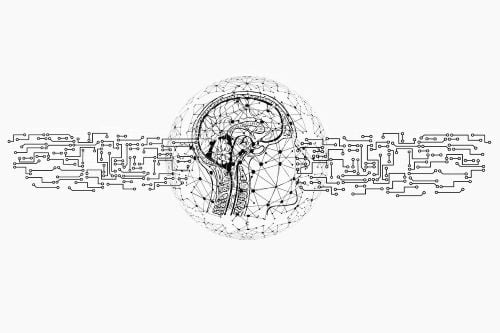 MT v. AI Translation and Content Creation
MT v. AI Translation and Content Creation
AI translation is built on transformer architecture, the very same architecture MT was built upon in 2016. Adam explains that the translation industry has already experienced AI and understands how it affects our roles. Incorporating the technology into our processes makes sense for high-volume projects; for highly regulated and revenue-driving materials and projects – arguably most agency projects – a human still needs to be heavily involved. And yet, he adds, “[t]he reality is that for most of the people on earth AI translation tools are the difference between no translation … or a bad translation, and a bad translation is better than no translation.” AI gives the “person on the street” the ability to create content that is “deceptively fluent but not accurate.”
The Challenges of AI
The ongoing press around ChatGPT and AI is polarizing the language services industry in various ways. For example:
-
Between the slowing economy and senior leadership reading about AI translation every day, translation departments and agencies are, of late, pressured to use automated translation to save cost and time. Yet most professional translators report that post-editing – from any source – often requires more time and effort than original translation from source material.
-
Investors are funding machine- and AI translation companies at unprecedented rates and these start-up companies tout quality as 90% accurate. When used in the right place, for the right content, at the right time, with the right oversight, this is good new technology. Yet it’s risky to use the technology for marketing material that needs to be culturally adapted or localized, content that could discredit or harm a company’s reputation or, in the extreme, affect liability or a lawsuit.
-
Moore’s Law, coined over 50 years ago, states that computing power will double each year. People expect translation to be fast and cost effective. If they don’t get it from their translation providers, they go to a machine translation option to get it done. Currently, the best option still lies somewhere in the middle, with a skilled translator managing the automation technology.
Balancing the Translation Options
Content has different values and people make decisions on what gets attention. Each stakeholder must consider, for example:
-
Content prioritization: Should an organization prioritize content that pulls in more readers or content about its top-selling products/services?
-
Target languages: Should all materials be translated for a high performing market, or should the budget be spread across multiple languages?
-
Who is the decision maker: Is it the translation team, the content team, a particular department?
-
The potential use and benefits of translation automation: Who will build translation memories? Is MT acceptable for certain materials?
Organizations with a global marketing or LangOps department can develop a strategy to identify, categorize, prioritize, and manage multilingual content. Without standard policies and processes, the organization will suffer from lack of guidance around consistent and expected communications.
Benchmarks for Handling Translation
The number of words an organization translates and the type of content requiring translation influences best practices for managing the technology/human translator permutation that will prove most beneficial for each project.
-
For organizations that translate over 10 million words per year and repeat content, having a LangOps department or Language Services Provider (LSP) with access to MT, a TMS, and human translators and post-editors makes sense. The responsible team can build the strategy and leverage MT with human post-editing for new content, or rely on TMS options for repeat translations, to see time and cost savings. If the organization relies more heavily on niche content – thought leadership or creative content, for example – humans will need to remain involved. Adam has seen about 50% of companies in this size category performing MT in-house and the other half outsourcing to an LSP.
-
Organizations translating 1 million to 10 million words annually are better served by having individual departments or their LSP manage the TMS for cost savings. The translation quantity may not be enough to build out the systems required for proprietary machine translation.
-
Organizations that translate less than 1 million words most benefit by working with an LSP specializing in human translation. By using open-source AI the organization risks releasing confidential or proprietary information, and the quantity of translated content cannot justify the costs associated with proprietary AI technologies or large language models (LLMs).
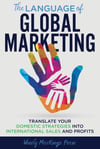
Please refer to my book, The Language of Global Marketing: Translate Your Domestic Strategies into International Sales and Profits, for guidance on what to translate.
Evolving MT and Post-Editing Risks
When Google Translate was first released, the professional translators at Rapport International would cringe when project managers requested post-editing for jobs “already done” by the client. Professional translators could immediately tell that the translation was not done by a human and that it would take longer to edit than to translate the project from scratch.
As MT and AI translation improves, a new service is being created. MTPE or Expert-in-the-Loop (EITL) specialists will need to possess deep subject knowledge to catch factual mistakes generated by technology-driven translations. Adam said that in these situations, he’d choose a subject matter expert with language skills rather than a fully bilingual translator without the subject knowledge.
For example, just as there are more than a dozen Inuit words to describe snow and ice, there are millions of distinct colors determined by the human eye. Some languages regularly use more words for colors than others so in the fashion industry, you need a translator who understands how to describe colors in both the source and target languages. Such subject matter expertise will be especially critical for technical subjects that could result in liability.
In 2006 and 2007, a translation error led to a series of failed knee replacement surgeries in Germany. The error occurred when the “non-modular cemented” label on the package of a knee prosthesis was incorrectly translated as “non-cemented,” leading surgeons to believe that no cement was needed for the surgery. As a result, 47 people had to undergo two painful knee replacements with months of recovery: https://phrase.com/blog/posts/5-examples-localization-gone-tragically-awry/.
As quality improves, the danger with post-editing lies in the reviewer “falling asleep at the wheel,” adds Adam. If the document reads nicely and seems accurate, big mistakes might slip through. It takes a lot of cognitive editing to catch potential big mistakes; editors will need to cross-check and validate minutia.
Here at Rapport International we recently had this occur in our own marketing department. Our very detail-oriented content writer incorporated content from ChatGPT, which maintained that an interpreter should “mimic the facial expressions of the person speaking.” This violates the interpreter code of ethics, which mandates that participants speak to and look at each other to pick up on non-verbal cues – not the interpreter. For our writer, that “bias” – the simple belief that ChatGPT may be right – influenced subsequent research, surfacing Google search results that could confirm the information to a degree, but not wholly or consistently.
Similarly, the danger for translators during MTPE will be the tendency to react to and “read” for content fluency rather than accuracy, especially if they are not subject matter experts.
The Future of Translation
Automated translation keeps improving and we will find myriad ways in which to incorporate new technologies. Yet throughout, humans will need to stay involved as there exist too many cultural differences, new words, idioms, niche companies and terminology, innovations, regulatory and legal risks, and liabilities to rely solely on technology.
Adam also tracks translation volumes in current languages and predicts the number of languages used online will steadily increase. There are currently about four billion people online and four billion people not yet online, and 85% of the world’s population does not speak English. Research shows that people want content in their own language – our goal as language professionals is to find a way to balance technology and human expertise to maximize efficiencies and ensure accuracy. All of which will translate into, as we often say here at Rapport International, a more peaceful and prosperous world.
Rapport International specializes in multilingual communications, providing language translation and interpretation services that are accurate and culturally appropriate. We use the right voice and the correct terminology to avoid liability, customize services to your needs, and deliver on time and within your budget. With our 100% satisfaction guarantee, you can trust that it’s done right. Contact us today if you would like more information or to get a free quote.
Rapport International specializes in multilingual communications, providing language translation and interpretation services that are accurate and culturally appropriate. We use the right voice and the correct terminology to avoid liability, customize services to your needs, and deliver on time and within your budget. With our 100% satisfaction guarantee, you can trust that it’s done right. Contact us today if you would like more information or to get a free quote.
Popular Posts
Popular industry news, interviews, technologies, and resources.







